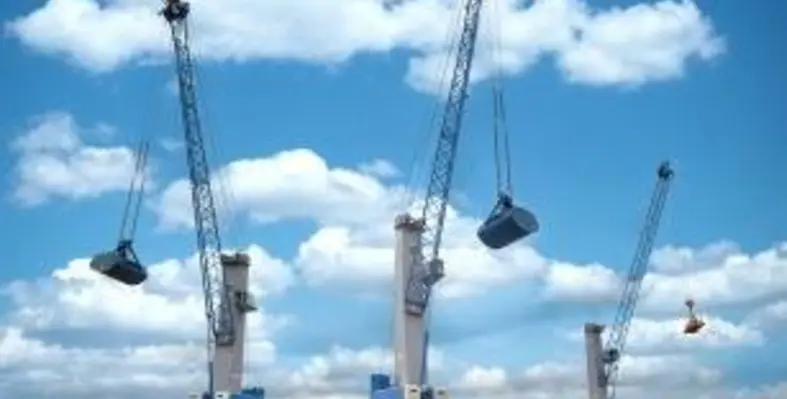Konecranes has launched its sixth generation of mobile harbor cranes, refreshing and reinforcing its industry-leading portfolio as global trade accelerates and the industry seeks more sustainable lifting solutions to reduce its climate impact
Generation 6 marks the first comprehensive revamp of Konecranes Gottwald’s mobile harbor crane portfolio in 15 years, and comes as growth in the global bulk and general cargo handling market accelerates. Research from Drewry Maritime Advisors forecasts the global bulk and general cargo handling market, excluding RoRo and vehicle traffic, to grow 6.8% year-on-year in 2021 to 7.4 billion tonnes. Drewry expects growth to continue in coming years, reaching 8.5 billion tonnes by 2025, a compound annual growth rate of 3.5%.
Konecranes, which launched the world’s first mobile harbor crane in 1956 and is a pioneer in Ecolifting, has worked closely with customers around the world while developing the new cranes. The result is a range of products that can eco-efficiently service essentially any type of vessel and any kind of cargo – containers, general cargo, project cargo and bulk – in any location, either on the quay or on a barge. Sales are now underway.
“Konecranes is a pioneer and leader in high-performance mobile harbor cranes, and today’s launch underscores that pedigree at a time when growth in the global bulk and cargo handling market gathers pace and customers are seeking more sustainable solutions,” said Konecranes President and CEO Rob Smith.
With its new Generation 6 Mobile Harbor Cranes, Konecranes has transformed industrial megatrends and current port developments in ports and terminals into high-performance cargo-handling technology. The initial six crane models with maximum lifting capacities of 200 t and radii up to 64 m stand for sustainability, de-carbonisation and eco-efficiency, in addition to ergonomics, digitalisation and automation.
E for Electric: The gene for sustainability
E for Electric denotes the electric drive systems of Konecranes Gottwald Mobile Harbor Cranes, in use since 1956. Generation 6 is designed so that customers can choose from several electric drive variants. Power can be supplied via the on-shore power grid or an on-board generator. If a crane always works on the same quay where shore power is available, customers can rely on using the appropriate equipment from the outset. If cranes need to be disconnected from the grid for journeys between quays with shore power supply, a battery pack ensures mobility – a first for Konecranes.
S for Smart: The gene for sustainability
S for Smart stands for the added smart features that Konecranes has given its Generation 6 cranes. The interpretation of Smart has been particularly versatile here, for example ergonomics. This is where the new cranes impress with a state-of-the-art cab, from which the crane operator has everything perfectly under control. This is due not least to the completely revised Visumatic crane management system, which also controls all smart crane features, supporting the crane operator with even more productive and safe handling options. Based on smart crane features, Konecranes is also gradually paving the way for further crane automation. Additional focus has been placed on transparent crane operation, too.
P for powerful: The gene for reliable dynamics
P stands for dynamics and maximum performance in continuous duty operation – serving all types of vessels in all terminals and in all applications. Eco-efficient with its type of drive and smart with its crane operator assistance systems, Generation 6 cranes are also improved in their core characteristic. More robust steelwork doubles the service life in container operation, up to 30% more powerful 4-rope grab curves ensure optimum operation of vessel hatches and up to 18% higher working speeds ensure fast vessel turnaround.
Heribert Barlage, senior vice president, Business Unit Mobile Harbor Cranes, concluded, “Generation 6 covers our complete crane modular system, including portal harbor cranes and cranes on barge. This means that the new cranes fit into any infrastructure, which makes the ESP code successful and future-proof not only on the quay, but also beyond the quayside.”





